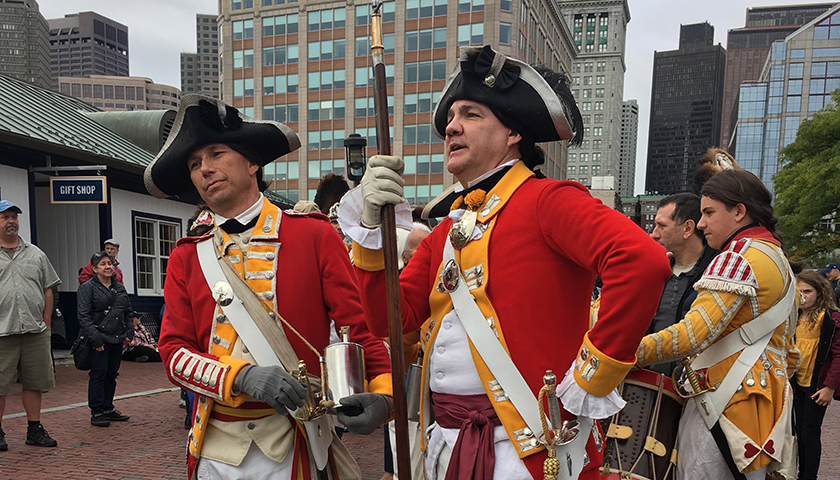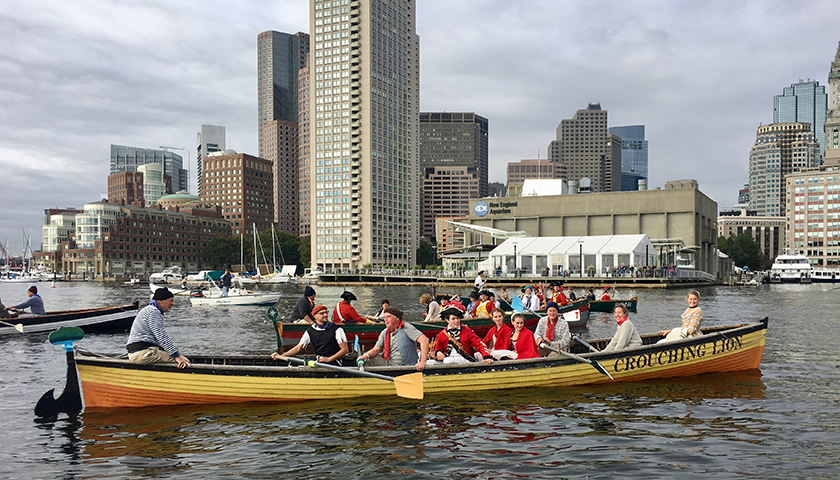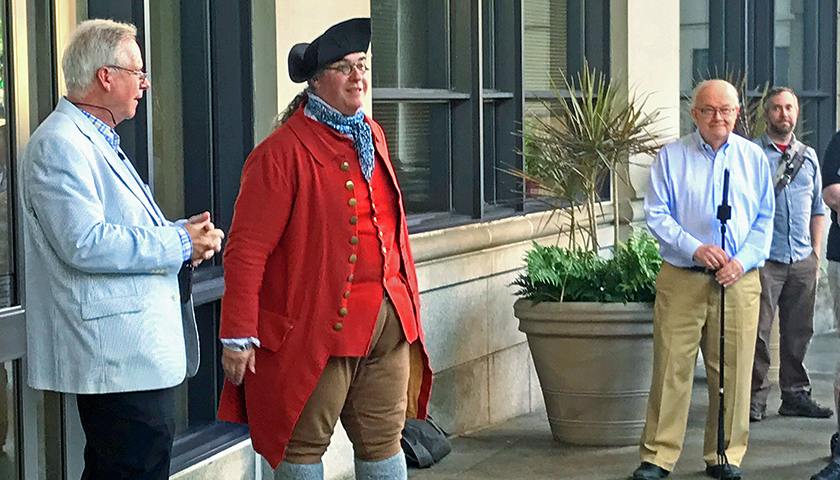The Redcoats invaded Boston—again—and swarmed over downtown to the dismay of the citizenry.
The soldiers were greeted with yelling and boos from angry “Colonists” wearing waistcoats and tricorn hats.
And Suffolk History Professor Robert Allison was the man behind it all, working in partnership with Minute Man Historical Park Ranger Jim Hollister.
Allison seemed to be everywhere during the Oct. 6-7 “occupation,” speaking at the reviewing stand for the “insolent parade” of Redcoats on Saturday, directing Suffolk students assisting in the reenactment, and hosting a reception at Sargent Hall as Redcoats lay siege to the site of the former Manufactory.

Bringing history alive
“Boston has a great history and people love to see it,” said Allison, who is chair of the Colonial Society of Massachusetts. “We need to do a better job engaging with the public, with Suffolk students, and with elementary students, because it’s their story and it’s important to their civic identity.”

About 100 additional British troop came in from Fort Point on longboats, dressed in handmade, traditional redcoats.
250 years ago ...
The arrival of the British troop reenactors commemorates the 250th anniversary of a historic episode that in time led to the American Revolution. A series of events will set the stage for Revolution 250, a 2026 sestercentennial celebration of American independence. Revolution 250 is a program of the Massachusetts Historical Society, which includes more than 45 organizations including Suffolk University and the City of Boston.
In preparation for the weekend’s occupation, 16 students volunteered in different capacities--some were on the Common at 6 a.m. Saturday to help the troops unload equipment; others were clearing traffic for the parade up State Street and through Downtown Crossing.
Student journalist created a video that aired on NECN, and students from journalism classes were working on features about the events—riding in the press boat and interviewing participants.

Virtual reality
Physics Professor Walter Johnson and his students also got involved as they added virtual reality to the occupation experience. Physics and History students recorded the events using immersive technologies through a cross-disciplinary program led by Johnson and Allison. The students used 360-degree cameras to take panoramic photos and videos of the events on the Common and downtown.
Hundreds of spectators watched as the soldiers announced their arrival in honor of King George and marched through Boston’s streets.
“It’s like escaping real life for a moment,” said Nick Thronbury, a reenactor with the Tenth Regiment of the Foot.
Redcoats marched up State Street, to the Old State House and continued on to Downtown Crossing and the Boston Common, where they would camp overnight.
Playing John Hancock at the Old State House and the Millennium Steps was Suffolk alumnus Stephen Chueka, a History/Theater major who now works at the Boston Tea Party Ships.
Siege of Sargent Hall
On Sunday morning, the British soldiers laid siege to Suffolk University’s Sargent Hall, the onetime site of the Manufactory House. They wanted the building for lodging soldiers, just as they did 250 years ago, when Boston’s poor and indigent citizens refused to leave the house.
Allison helped bring the historic moment to life in a talk he gave in front of Sargent Hall, offering the public insight into the history of this specific event.
Media Contact
Greg Gatlin
Office of Public Affairs
617-573-8428
[email protected]



